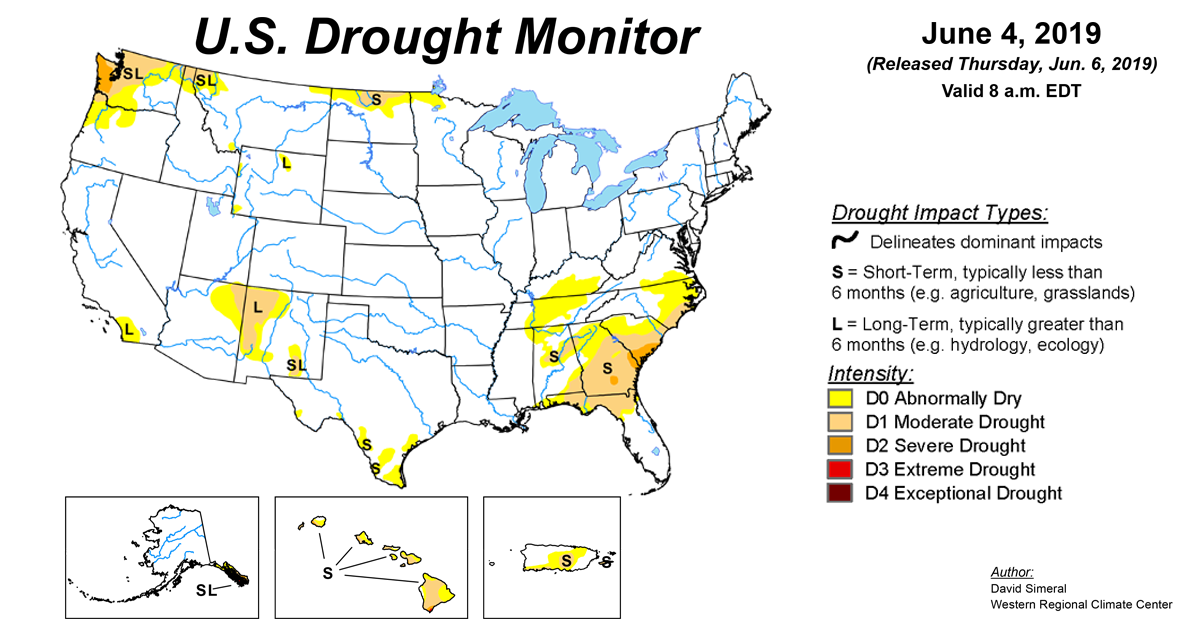
According to the June 4, 2019, U.S. Drought Monitor, moderate to extreme drought covers 5.0% of the United States, an increase from last week’s 3.3%. The worst drought categories (extreme to exceptional drought) remained the same as last week: 0.14%.
The strong high-pressure ridge over the Southeast migrated westward as an upper-level low pressure trough shifted to the East Coast, setting up a ridge over the southern to central Plains by the end of the week. Another upper-level low moved into the Southwest with a ridge setting up over the Northwest, resulting in a classic split flow in the weekly charts over the Pacific Northwest. As a result of this pattern, the Southeast and Pacific Northwest to northern Plains were warmer and drier than normal, while the Southwest and Great Lakes to New England were cooler than normal.
Fronts and surface lows moving in this transitional pattern brought above-normal precipitation to parts of California-Nevada, the southern and central High Plains to Mid-Mississippi Valley, and Mid-Atlantic to Northeast. Drought expansion outweighed drought contraction this week, with drought and abnormal dryness expanding in the Southeast, coastal Northwest, northern Plains, and South Texas.
Abnormal dryness and drought are currently affecting over 45 million people across the United States—about 14.6% of the country’s population.

The full U.S. Drought Monitor weekly update is available from Drought.gov.
In addition to Drought.gov, you can find further information on the current drought as well as on this week’s Drought Monitor update at the National Drought Mitigation Center. See their recent news releases.
The most recent U.S. Drought Outlook is available from NOAA’s Climate Prediction Center and the U.S. Department of Agriculture provides information about the drought’s influence on crops and livestock.
For additional drought information, follow #DroughtMonitor on Facebook and Twitter.



